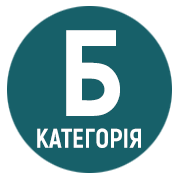PECULIARITIES OF USING THE WATER RESOURCES OF THE LEFT TRIBUTARIES OF THE MIDDLE DNIPRO FOR HYDROPOWER AND MELIORATION
DOI:
https://doi.org/10.32782/2786-5843/2024-3-9Keywords:
Middle Dnipro, hydropower, irrigation systems, melioration, Psel, Vorskla.Abstract
Relevance of the study: the left tributaries of the Middle Dnipro Psel, Vorskla, Sula, Trubyzh, Supiy, Zolotonoshka, Kryva Ruda, Kobelyachok, Kagamlyk, Irkliy, Kovray and Kovalivka belong to the category of medium and small rivers. The total volume of runoff of the rivers on the left bank of the Middle Dnieper sub-basin is similar to the volume of runoff of the Southern Bug, and the catchment area is even larger. These rivers are of significant importance for the left-bank forest-steppe of Ukraine, where they flow. They are used for the irrigation of agricultural lands and for hydropower. These two types of use are very important today due to the intensification of regional consequences of global climate change and the introduction of green electricity in Ukraine. The subject of the study is the use of water resources of the left tributaries of the Middle Dnipro in hydropower and land reclamation. The aim of the study is to characterize the current state of the use of the region's rivers for hydropower needs and the involvement of river basins of the left tributaries of the Middle Dnipro in irrigation and drainage processes in agriculture. The purpose of the study: to determine the current state of the hydropower potential of the rivers of the study region and the involvement of the river basins of the left tributaries of the Middle Dnipro in the processes of irrigation and drainage in agriculture. Research methodology: methods of analysis and synthesis, geographical and spatial analysis, scientific generalization. Research results: the study shows the features of the current economic use of the rivers Psel, Vorskla, Sula, and others, which are of significant importance for the left-bank forest-steppe of Ukraine. The results show that these rivers are actively used for the irrigation of agricultural lands and hydropower production. In the basins of the Psel and Vorskla rivers, 15 small hydroelectric power plants are functioning, with a total capacity of 6.5 MW. Global climate changes, characterized by an increase in the average annual air temperature, have significantly affected the hydrological regime of the region, necessitating the expansion of irrigation systems. Practical significance: the research consists in confirming the prospects of using small hydroelectric power plants in the basins of the Psel and Vorskla rivers to increase the share of green energy in the region. The study also highlights the importance of maintaining and developing irrigation systems to ensure sustainable agricultural production in the face of climate change. Conclusions: the left tributaries of the Middle Dnipro are important water resources for the left-bank forest-steppe of Ukraine; small hydropower plants on the Psel and Vorskla rivers are promising for the development of green energy in the Poltava and Sumy regions; global climate change has affected the hydrological regime of the region, which requires the expansion of irrigation systems to support agriculture; the development of hydropower and irrigation systems on the left bank of the Middle Dnieper will contribute to the improvement of water quality and energy independence of the region. Prospects for further research: further research can focus on optimizing the operation of small hydropower plants to increase their efficiency and environmental safety. It is also necessary to investigate the possibilities of expanding irrigation systems in the face of climate change to ensure a stable water supply to agricultural lands. Another promising direction is the study of the impact of climate change on the water resources of the region and the development of adaptive strategies for the preservation of the ecosystem of river basins.
References
Атлас енергетичного потенціалу відновлюваних джерел енергії України / за заг. ред. С.О. Кудрі. Київ : Інститут відновлюваної енергетики НАН України, 2020. 82 с.
Атлас України / кер. проєкту Л.Г. Руденко, В.С. Чабанюк, А.І. Бочковська. Київ : Інтелектуальні системи ГЕО, 1999–2000.
Вишневський В.І., Сташук В.А., Сакевич А.М. Водогосподарський комплекс у басейні Дніпра: наукове видання. Київ : Інтерпрес ЛТД, 2011. 188 с.
Кудря С.О. Нетрадиційні та відновлювані джерела енергії : підручник. Київ : НТУУ «КПІ», 2012. 492 с. URL: http://pdf.lib.vntu.edu.ua/books/2020/Kudrya_2012_492.pdf
Sarnavskyi S. Use of water resources of the left tributaries of the middle Dnipro: hydropower and melioration. International Conference of young scientists on meteorology, hydrology and environmental monitoring (ICYS–MHEM), Kyiv, Ukraine, November 15–16, 2023. DOI: https://doi.org/10.15407/icys–mhem.2023.016
Сарнавський С.П., Гребінь В.В. Ретроспективний аналіз досліджень річкової мережі лівобережжя Середнього Дніпра (від перших згадок до детальних описів – IV ст. н.е. – кінець XVIII ст.). Гідрологія, гідрохімія і гідроекологія. 2021. № 4(62). С. 46–66. DOI: https://doi.org/10.17721/2306–5680.2021.4.4
Сарнавський С.П., Гребінь В.В. Ретроспективний аналіз досліджень річкової мережі лівобережжя Середнього Дніпра від періоду систематизації інформації про річки до періоду комплексних досліджень (XIX ст. – поч. XXI ст.). Гідрологія, гідрохімія і гідроекологія. 2022. № 3(65). С. 25–56. DOI: https://doi.org/10.17721/2306–5680.2022.3.3
Сарнавський С.П. Трансформація річкової мережі в межах басейнів річок Хоролу та Говтви. Освітні й наукові виміри географії та туризму : матеріали Всеукр. наук.-практ. Інтернет–конф. для студентів, аспірантів, молодих вчених, м. Полтава, 18 листопада 2020 р. Полтава, 2020. С. 26–30.
Сарнавський С.П. Характеристика фізико-географічних умов формування стоку річок лівобережжя середнього Дніпра. DOI: https://doi.org/10.30525/978–9934–26–395–8–20
Смирнова В.Г. Трансформація річок та річкових русел (на прикладі річкових водних об’єктів Полтавської області). Гідрологія, гідрохімія і гідроекологія. 2013. Вип. 1. С. 109–116.
Harris, I., Osborn, T.J., Jones, P. & Lister, D.H. Version 4 of the CRU TS monthly high–resolution gridded multivariate climate dataset. Sci Data 7, 109 (2020). URL: https://rdcu.be/b3
Регіональний офіс водних ресурсів у Полтавській області. Водогосподарська обстановка в межах Полтавської області. URL: https://poltavavodgosp.gov.ua/vodohospodarska–obstanovka–v–mezhakh–poltavskoi–oblasti–stanom–na–13–04–2018–roku/
Закон України від 17.02.2022 № 2079–IX «Про організації водокористувачів та стимулювання гідротехнічної меліорації земель».
Сарнавський С.П. Зміни водно-балансових складових у межах лівобережжя Середнього Дніпра за 1961–2020 рр. Гідрологія, гідрохімія і гідроекологія. 2023. № 4(70). С. 59–78. DOI: https://doi.org/10.17721/2306–5680.2023.4.5
Василенко Є., Кошкіна О. Водна Ініціатива Європейського Союзу Плюс для країн Східного партнерства: Результати 2 та 3: техн. звіт: опис характеристик району басейну річки Дніпро /Український гідрометеорологічний інститут Державної служби України з надзвичайних ситуацій та Національної академії наук України. Версія 1.0. Липень 2019. 38 с. URL:https://www.euwipluseast.eu/images/2019/07/PDF/EUWI_UA_characteristics_Dnipro_Summary_UA_20190702.pdf
Єрмілов С. Мала гідроенергетика України. Аналітичний огляд. Т. І. Київ, 2018. 181 с.






